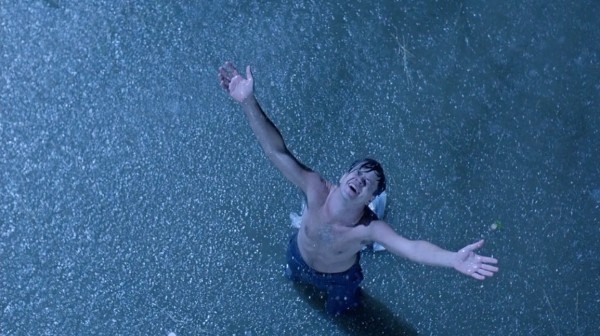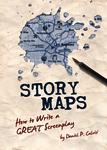The Shawshank Redemption Screenplay
The Shawshank Redemption screenplay by Frank Darabont, based on the novella by Stephen King, is a powerful character-driven drama that covers many years in the lives of multiple characters, all tied together around the theme of “preserving hope in the most hopeless of situations.”
Andy Dufresne (Tim Robbins) is continually tested by events that would crush the spirit of a lesser man, and just when Red (Morgan Freeman) and we, the audience, feel certain that he’s been crushed, he surprises us all and escapes Shawshank Prison.To make the escape that much more thrilling, Darabont chose not to show Andy’s preparation, waiting until AFTER Andy has escaped and only then showing it to us in flashback. After all, this is not a conventional prison escape movie, like The Great Escape or Escape From Alcatraz, in fact, it’s almost the “anti-prison escape movie.” Andy’s intricate plan occurs offscreen as we focus on the internal conflicts and arcs of the men who are put through hell by a corrupt and ruthless warden.
The Shawshank Redemption script does a lot of great things, like…
- Telling a slow, sprawling drama story with a protagonist who has no obvious external goal for over half the length of the film…and yet it never drags or loses urgency.
- Using beats that occurred in the past to actively move the present line of action forward.
- Using repetitive actions (the various violent beat-downs on multiple characters) for crucial narrative reasons that never actually feel repetitive.
- Developing several characters to create a rich ensemble of personalities and dramatic conflicts.
- Devoting whole sections to supporting characters (e.g., Brooks and Red) in which the protagonist does not appear.
- Taking a well-trod genre, the prison movie, and giving it new life, unique turns and pathos while still shocking us with incredible brutality.
- Using “on the nose” Voiceover narration to drive the plot in several scenes without boring us. Yes, there’s a lot of amazing lines in Morgan Freeman’s narration, but there’s also a nice amount of excess in there, too, yet we don’t mind because he truly gives us the “voice” of the story as he weaves crucial setups seamlessly into his poetic verse that will pay off in big ways, later.
I encourage you to watch the film and study the screenplay to find out how Darabont uses these advanced techniques to create a compelling story that has become a modern classic.
Click here to download The Shawshank Redemption Screenplay (PDF)
You will also find some great tools to help you break down the film over at Robert Rich’s new site, ScreenplayHowTo.com, including a detailed history and analysis of the film, a FREE pdf download of the Shawshank Redemption Story Map and a link to download the Shawshank Redemption screenplay. Rich is my former protege turned evil nemesis, and even though he’ll never grow more powerful than me at the rich art of story analysis, he’s doing his part to wave the flag of Story Maps and for that he should be commended (and he always credits my book, Story Maps: How to Write a GREAT Screenplay, for which I am eternally grateful).
Click here to download The Shawshank Redemption Story Map (PDF)
If you’ve ever written a drama, you know how tough it can be to “show” and not tell in active scenes. Just coming up with enough scenes to fill a feature-length script can be difficult, so it’s helpful to study a movie like Shawshank to see how it can be done (and at 139 minutes, no less! The screenplay comes in at 121 pages).
Please feel free to drop your comments or questions below.
Good Luck and Happy Writing,
Dan Calvisi
Related videos:
The prison escape scene from The Shawshank Redemption:
Amusing anecdote from a curly-haired M. Night Shyamalan about The Shawshank Redemption:





Leave a Reply
Want to join the discussion?Feel free to contribute!